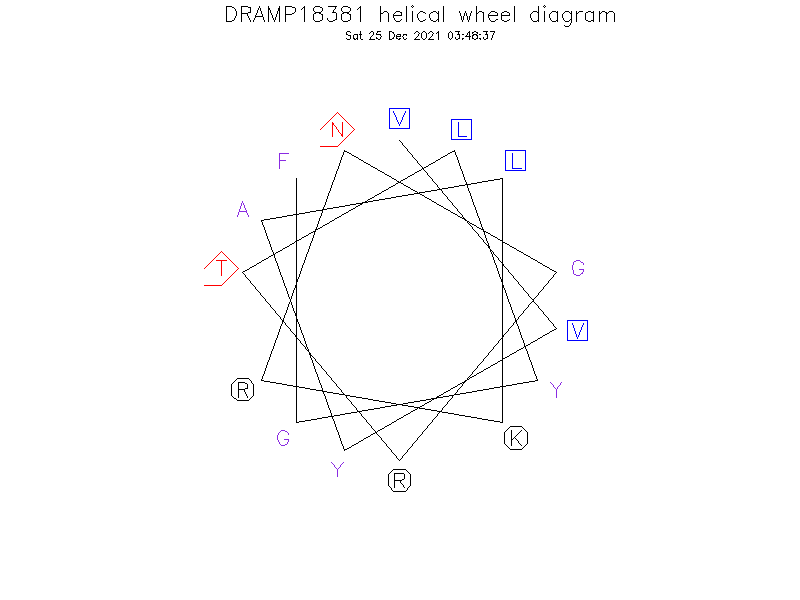General Information
-
DRAMP ID
- DRAMP18381
-
Peptide Name
- H4-(86-100) (histone-derived)
-
Source
- rat
-
Family
- Not found
-
Gene
- Not found
-
Sequence
- VVYALKRNGRTLYGF
-
Sequence Length
- 15
-
UniProt Entry
- No entry found
-
Protein Existence
Activity Information
-
Biological Activity
- Antimicrobial, Antibacterial
-
Target Organism
- Active against E. coli (LD90 6.68 ug/ml), P. aeruginosa (LD90 4.8 ug/ml), B. subtilis (LD90 17 ug/ml), and S. aureus (14.7 ug.ml).
-
Hemolytic Activity
-
- No hemolysis information or data found in the reference(s) presented in this entry
-
Cytotoxicity
-
- Not included yet
-
Binding Target
- Not found
Structure Information
-
Linear/Cyclic
- Not included yet
-
N-terminal Modification
- Not included yet
-
C-terminal Modification
- Not included yet
-
Nonterminal Modifications and Unusual Amino Acids
- Not included yet
-
Stereochemistry
- Not included yet
-
Structure
- Not found
-
Structure Description
- Not found
-
Helical Wheel Diagram
-
PDB ID
- None
-
Predicted Structure
- There is no predicted structure for DRAMP18381.
Physicochemical Information
-
Formula
- C82H129N23O20
Absent Amino Acids
- CDEHIMPQSW
Common Amino Acids
- GLRVY
Mass
- 1757.07
PI
- 10.28
Basic Residues
- 3
Acidic Residues
- 0
Hydrophobic Residues
- 6
Net Charge
- +3
-
Boman Index
- -2029
Hydrophobicity
- 0.007
Aliphatic Index
- 97.33
Half Life
-
- Mammalian:100 hour
- Yeast:>20 hour
- E.coli:>10 hour
Extinction Coefficient Cystines
- 2980
Absorbance 280nm
- 212.86
Polar Residues
- 6
DRAMP18381
Comments Information
Fuction
- ATP can enahnce its activity, implying its involvement in inhibiting the DNA gyrase activity.
Literature Information
- ·Literature 1
-
Title
- Antimicrobial effects of H4-(86-100), histogranin and related compounds--possible involvement of DNA gyrase.
-
Pubmed ID
- 18803668
-
Reference
- FEBS J. 2008 Nov;275(21):5286-97.
-
Author
- Lemaire S, Trinh TT, Le HT, Tang SC, Hincke M, Wellman-Labadie O, Ziai S.

